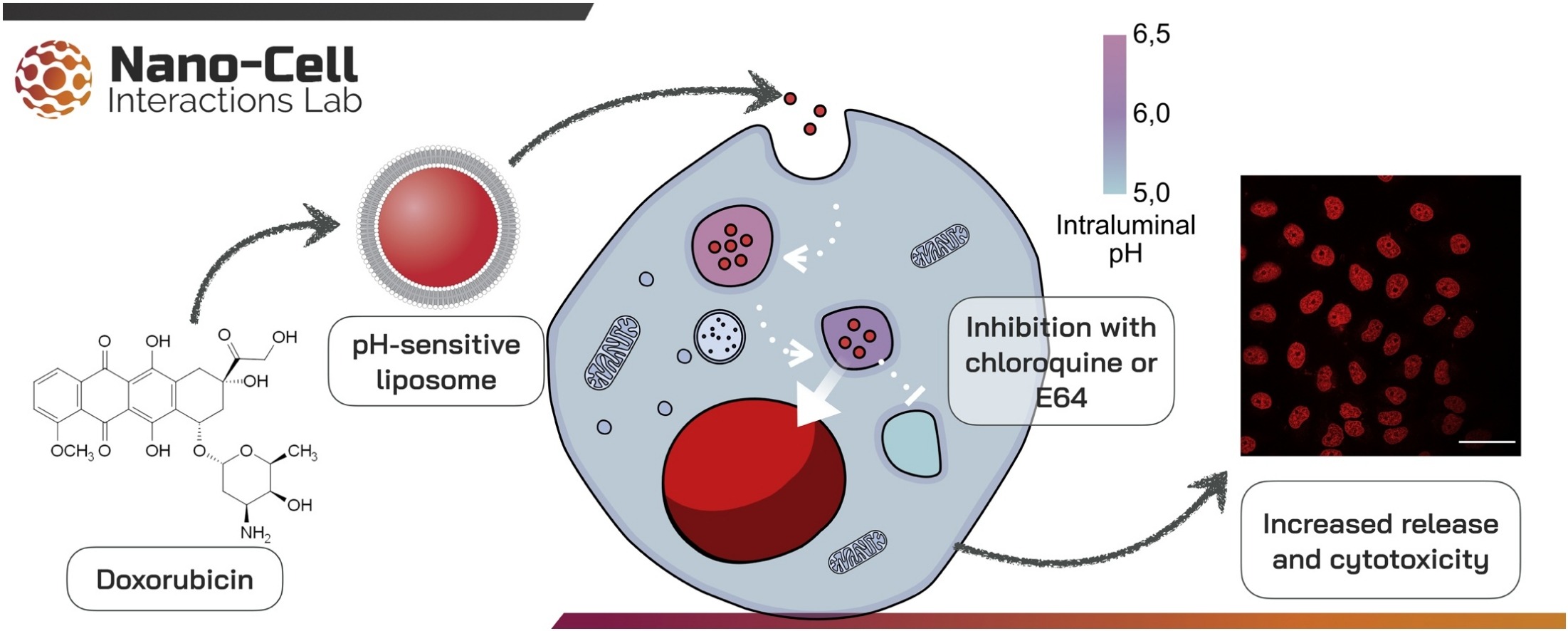
This paper shows that the release of drugs from pH-related liposomes is more complicated than just dependent on decreases in intracellular vesicles' pH. Chloroquine, an acidification inhibitor, increased doxorubicin's release and cytotoxicity of pH-related liposomes. A similar effect was observed for E64d, a cysteine protease inhibitor. Doxorubicin is chemotherapy widely used in the clinic; our work provided knowledge for developing rational strategies to improve smart drugs capable of preventing the advancement of tumors.
Biomedicine & Pharmacotherapy, 2021
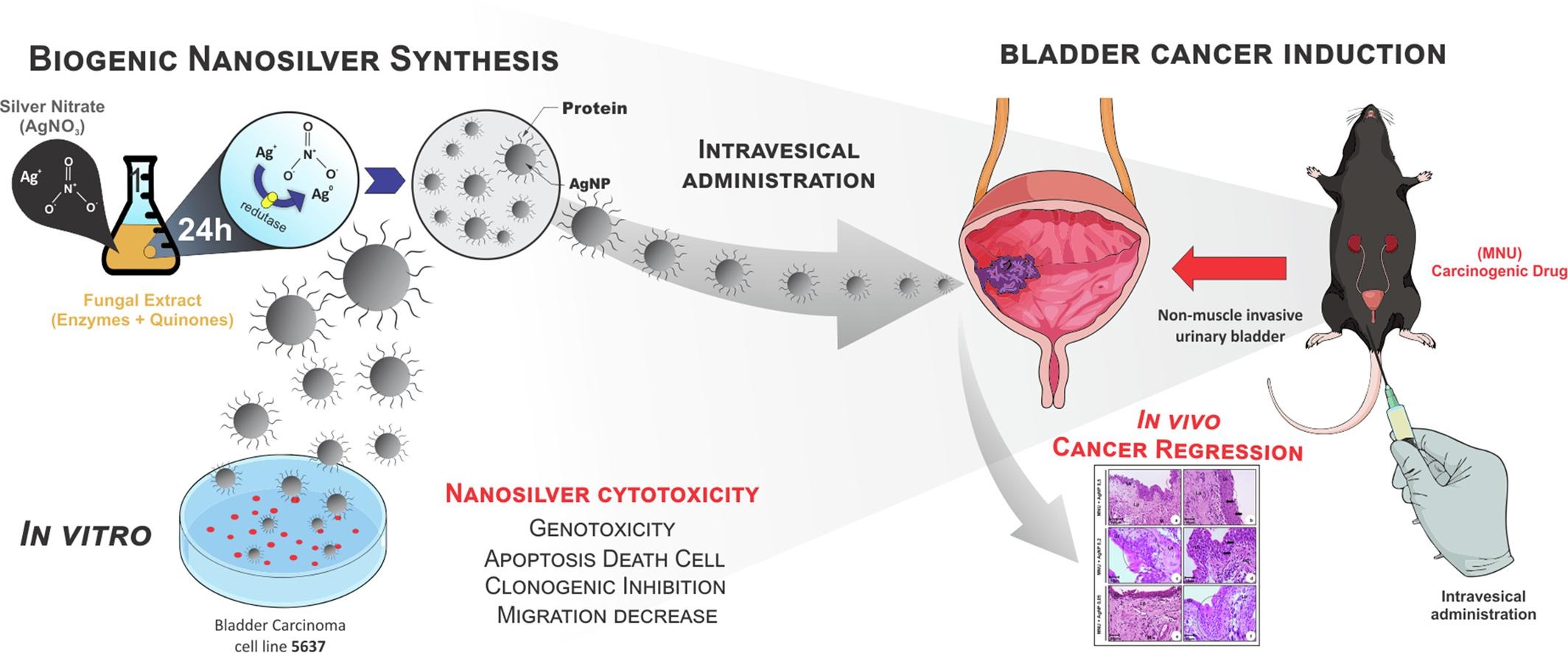
Bladder cancer is still a cancer of high prevalence and challenging to treat. This work demonstrates the anti-tumor mechanisms of silver nanoparticles (AgNP) in vitro and in vivo. Overall, these findings showed that AgNP could be an economical alternative and a promising candidate for bladder cancer treatment.
European Journal of Pharmaceutics and Biopharmaceutics, 2020
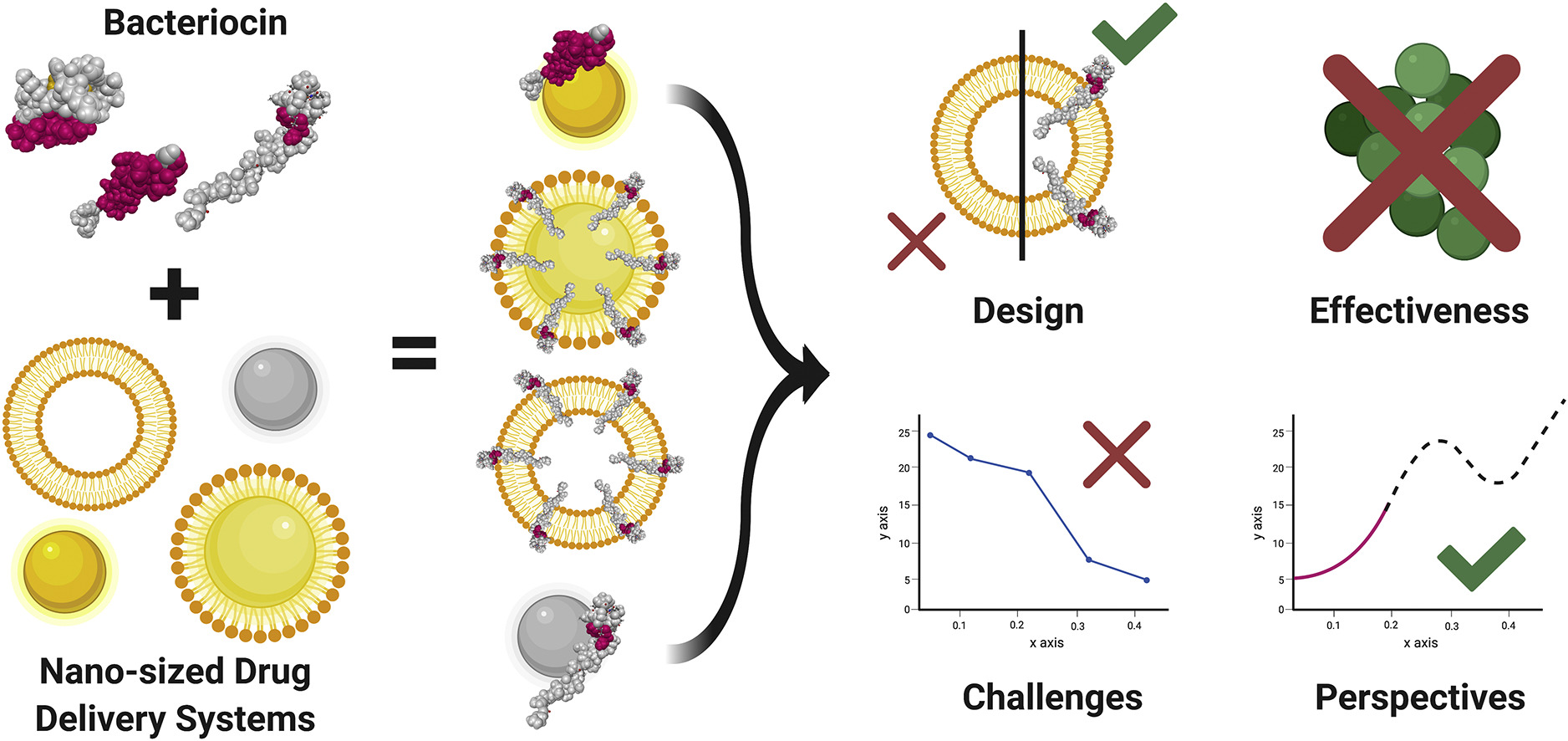
In this review, we discussed the challenges that bacteriocins, peptide antimicrobials, need to overcome before reaching the market. Also, we address strategies to enhance future generations of nanometer-sized bacteriocin drug delivery systems.
Journal of Controlled Release, 2020
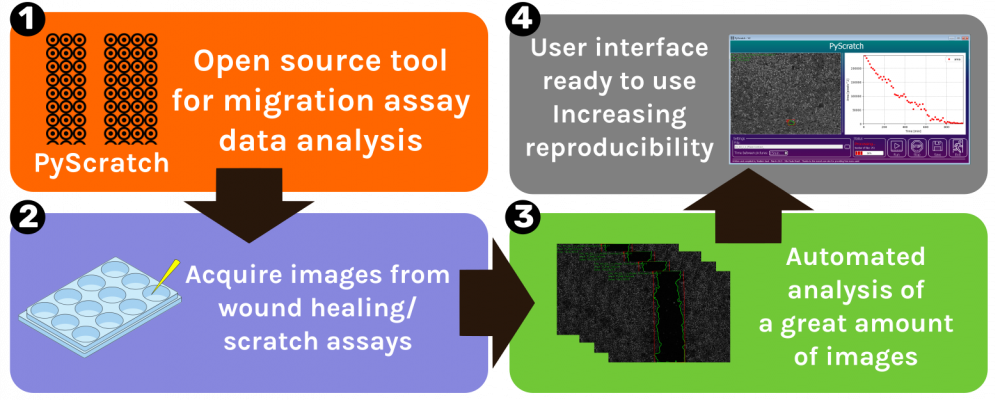
We developed the PyScratch, a simple tool for processing spatial and temporal information in an automated fashion from wound healing and scratch assays. PyScratch offers a user-friendly interface allowing researches with little or no programming skills to perform quantitative analysis of in vitro scratch assays.
Computer Methods and Programs in Biomedicine, 2020
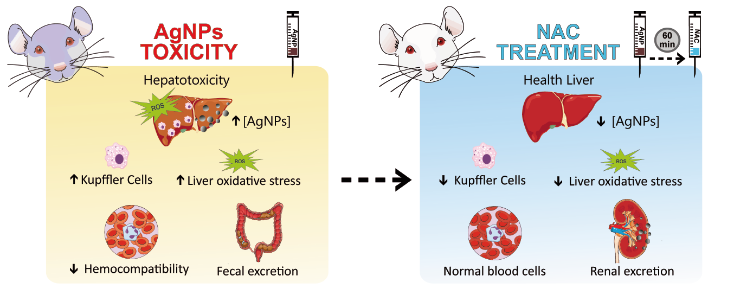
The increasing use of silver nanoparticles (AgNPs) in consumer products raises the risk of human toxicity. Currently, there are no therapeutic options or established treatment protocols in cases of AgNPs intoxication. Here, we investigated the use of N-acetylcysteine (NAC) against the systemic toxic effects of AgNPs (79.3 nm) in rats. Treatment with a single intraperitoneal injection of NAC (1 g/kg b.w.) one hour after AgNPs exposure significantly attenuated all toxic effects evaluated and altered the bioaccumulation and release patterns of AgNPs in rats. The findings show that NAC may be a promising candidate for clinical management of AgNPs intoxication.
Nanotoxicology, 2019
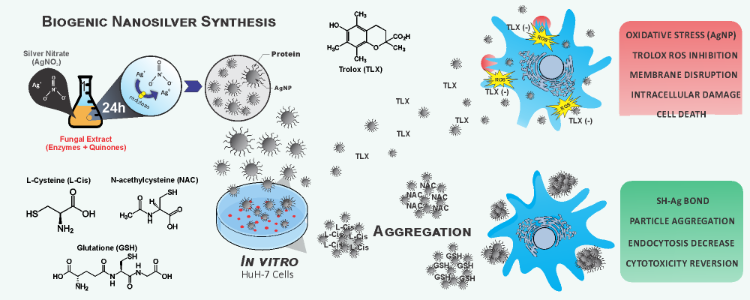
Here, we studied the molecular interaction between the thiol-antioxidants (N-acetyl-L-Cysteine, L-Cysteine, and glutathione) or non-thiol-antioxidants (Trolox) with chemically and biologically synthesized AgNP. Both antioxidants could mitigate ROS production in Huh-7 hepatocarcinoma cells, but only thiol-antioxidants could prevent the cytotoxic effect, directly binding to the AgNP leading to aggregation. Our findings show that data interpretation might not be straightforward when using thiol-antioxidants to study the interactions between metallic nanoparticles and cells. This artifact exemplifies potential pitfalls that could hinder the progress of nanotechnology and the understanding of the nanotoxicity mechanism.
Nanomedicine: Nanotechnology, Biology and Medicine, Feb 2020
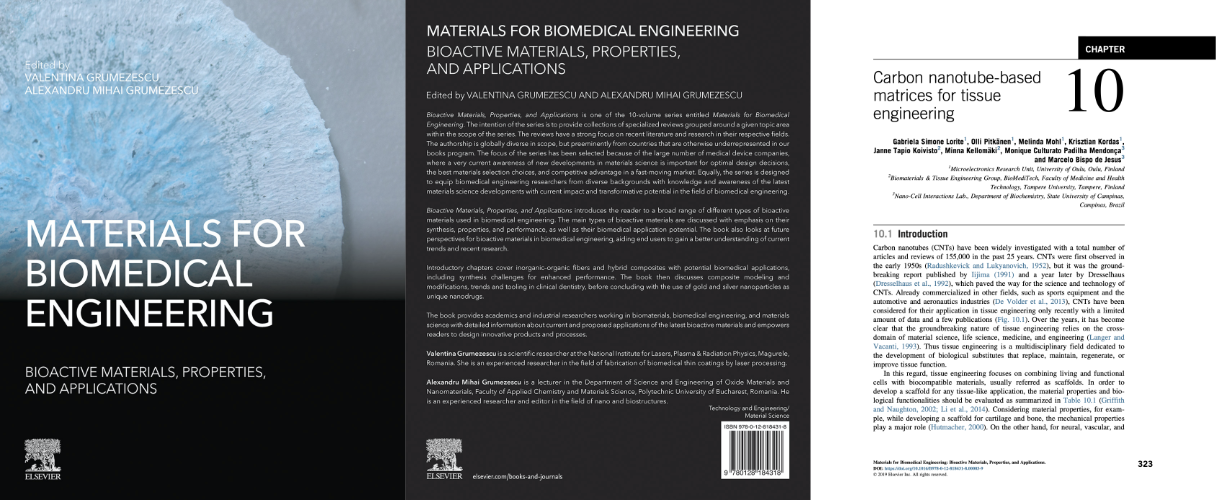
This chapter provided a review of the state-of-the-art carbon nanotubes-based matrices designed for tissue engineering, focus on the biodegradability and long-term toxicity of CNTs. Chapter 10 in Materials for Biomedical Engineering: Bioactive Materials, Properties, and Applications. 1st edition. Grumezescu and Grumezescu (editors). Elsevier. 616 pages
Materials for Biomedical Engineering. 2020
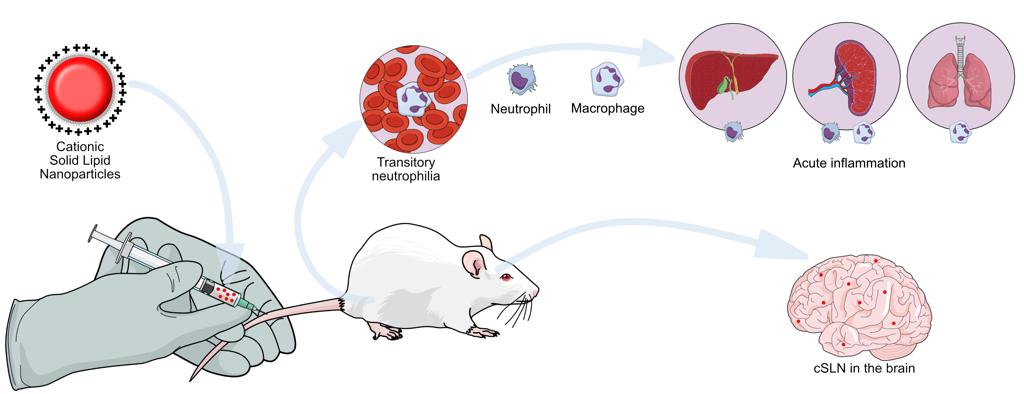
We found increases in the population of macrophages in the lungs, liver, and spleen and also migration of circulating neutrophils into inflamed tissue and a decrease in blood urea nitrogen. We also observed the presence of cSLNs within the brain parenchyma without any sign of damage to the blood-brain barrier. These side effects appeared to be mild and transitory (< 72 h). These findings reinforce the importance of investigating the toxicity of SLN-based formulations before the incorporation of drugs/genetic material to the formulation and its translation to the clinic.
Drug Delivery and Translational Research, Fev 2020

We hypothesized that the thiol-chelating compound N-acetylcysteine (NAC) could be used to reduce the toxic effects of AgNPs on soil invertebrates such as enchytraeids (Enchytraeus crypticus,Oligochaeta). This study presented novel evidence suggesting that N-Acetylcysteine (NAC) and glutathione (GSH) could be used to reduce the toxic effects of Ag materials on soil invertebrates such as enchytraeids (Oligochaeta, Enchytraeidae).
Environ Pollut. Jan 2020

This study demonstrated that the toxicity of AgNPs to enchytraeid (Annelida: Oligochaeta) reproduction may be directly linked with high Ag availability in the soil therefore resulting in increased Ag bioaccumulation. NAC protects the Enchytraeus crypticus from toxicity of the AgNPs by reducing the concentration of Ag inside the organisms, rather than the rate at which Ag is entering the organism. Overall, we conclude that NAC could be an effective alternative for early remediation and recovery of terrestrial organisms exposed to metal-contaminated soils.
Sci Total Environ. Jan 2020

This study assessed the toxicity of two commonly used derivatives of graphene-based nanomaterials (GBNs), graphene oxide (GO) and reduced graphene oxide (rGO), in the soil invertebrate Enchytraeus crypticus using a reduced full life cycle test. Our results suggested that the degree of oxidation of GO correlates with their toxic effects on E. crypticus, which argues against generalization on GBNs ecotoxicity.
Nanomaterials (Basel). May 2019

This work shows that Solid lipid nanoparticles are internalized by clathrin-mediated endocytosis, leading to a transfection efficiency of approximately 60%. Interestingly, after acidification (below pH 5.0), the nanoparticle appears to release its DNA content, which can be an essential step for transfection. The mechanisms in this work can help to improve lipid nanoparticle formulations.
Nanotechnology, 2018
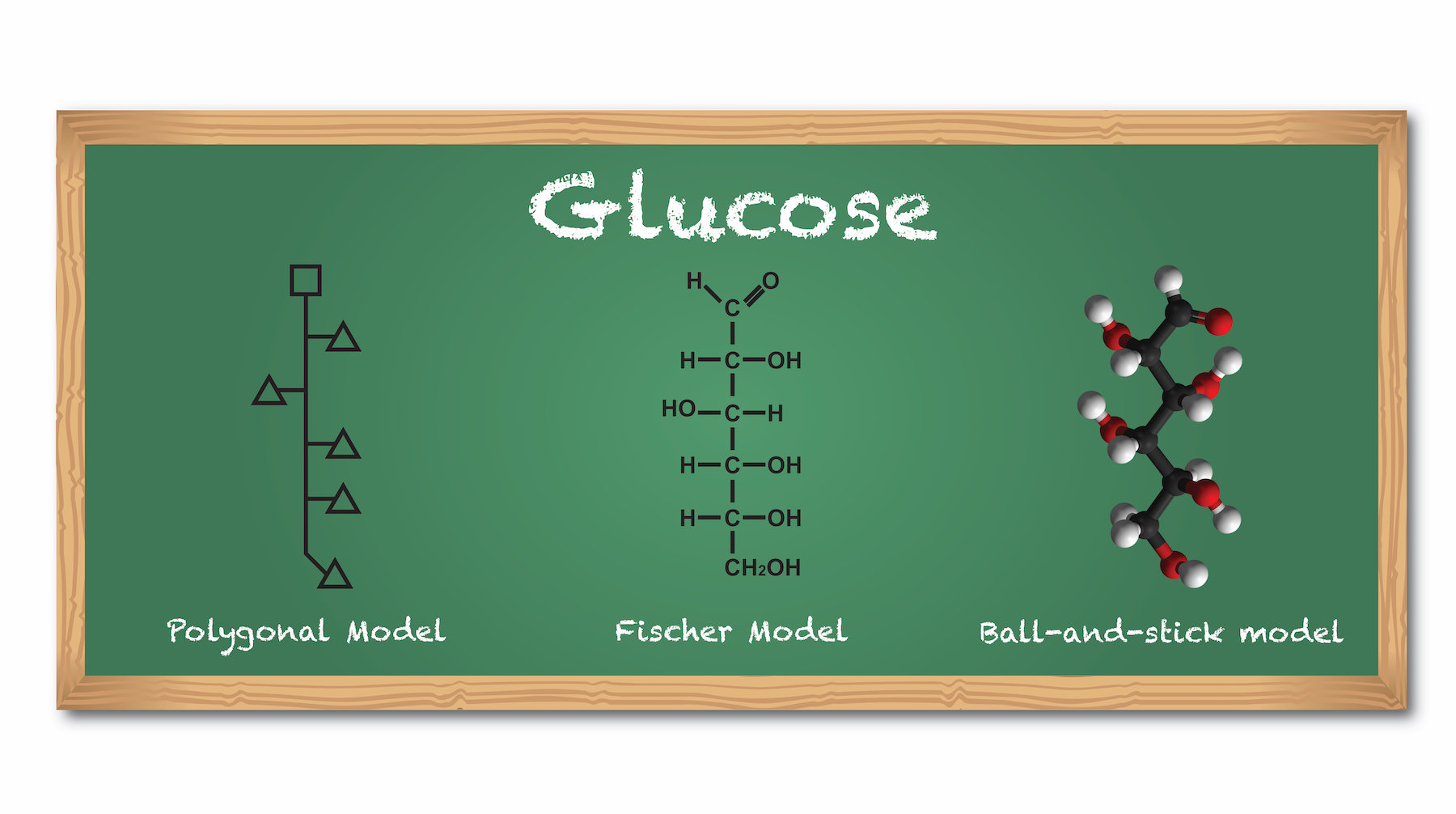
Part of the biochemical knowledge must include some understanding of the structure of biomolecules. However, acquiring such knowledge can be time-consuming and require a significant effort from the student. This article describes the “polygonal model” as a new way of graphically representing biomolecules. This model is based on geometric figures, such as open triangles, squares, and circles representing hydroxyl, carbonyl, and carboxyl groups, respectively. The students considered the polygonal model easier and faster to represent molecules than Fischer’s representations without losing information. In general, the polygonal model promoted contact with structures, e.g., through drawing activities and encouraging student-student dialogue, thus facilitating biochemistry learning.
Biochemistry and Molecular Biology Education, 2017
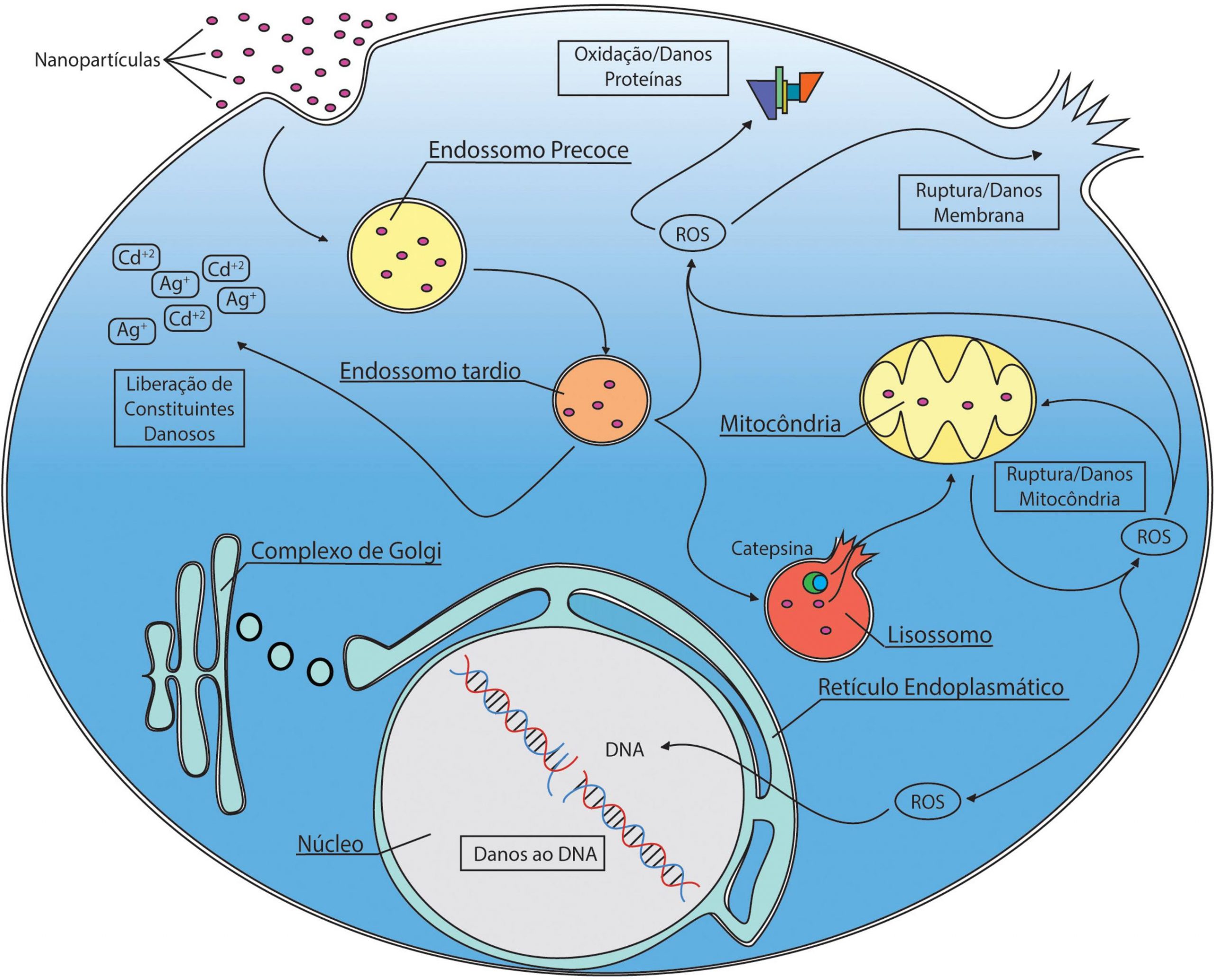
Although the literature on nanotechnology and its applications has grown in recent years, a deep understanding of the interactions at molecular levels between nanoparticles and cells is still scarce. Studies that demonstrate the underlying mechanisms of nanoparticle endocytosis, intracellular traffic, and cellular processing are essential to better understand how cells interact with these materials and their possible unwanted effects, eg. nanotoxicity. In this work, we discuss the theoretical concepts about the study of endocytosis and the intracellular traffic of nanoparticles. Finally, we discuss the main techniques used to study this process: flow cytometry, endocytosis inhibitors, and confocal microscopy.
Química Nova, 2016
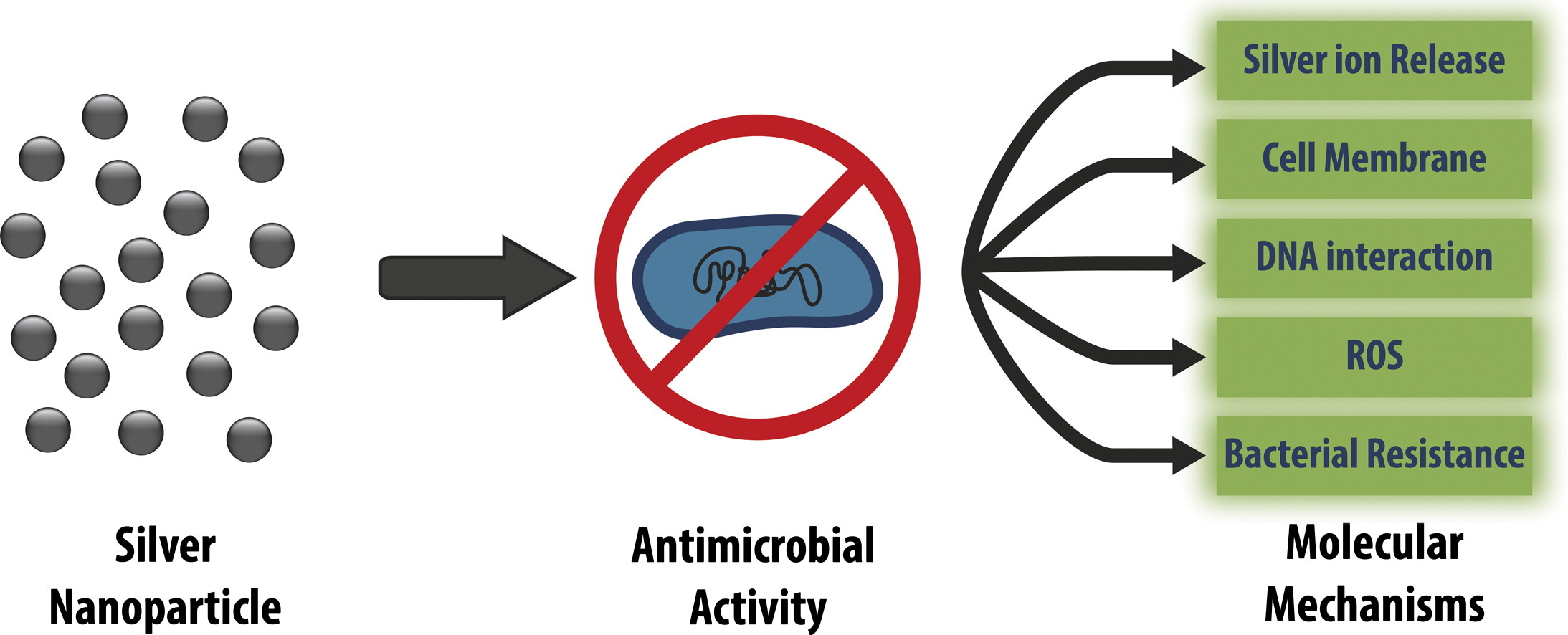
In this review, we discuss the main mechanisms related to silver nanoparticles' antimicrobial activity — silver nanoparticles' role versus the release of silver ions in antibacterial activity. We discuss how the interactions of lipids and proteins influence the toxicity of silver nanoparticles. And finally, how DNA damage and the generation of free radicals are related to the toxicity of silver nanoparticles.
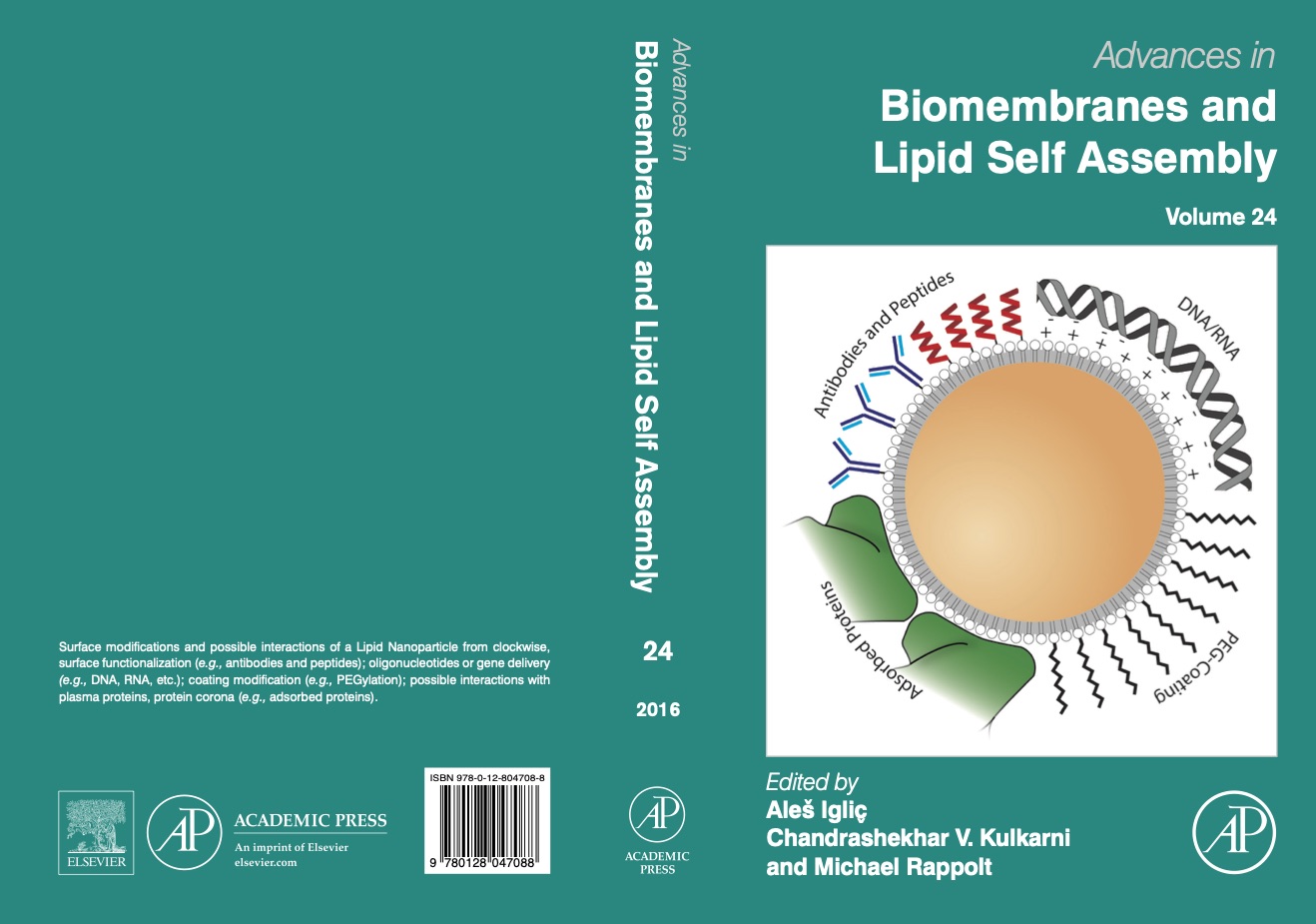
Lipid nanoparticles have a solid core coated with surfactant molecules. They have several advantages over other nanoparticles, including protecting drugs against chemical degradation, protecting genetic material against enzymatic degradation, high stability (greater than three years), and are easy to scale up and sterilize. They benefit from the combined advantages of liposomes and emulsions while minimizing their disadvantages. However, its internal structures are not fully understood. This chapter discusses the physicochemical aspects of the core of lipid nanoparticles and how they influence their role as drug and gene delivery systems.
Advances in Biomembranes and Lipid Self-Assembly, 2016

Solid lipid nanoparticles (SLNs) are considered a safe alternative for gene delivery. Although significant advances have been made in this field, fundamental knowledge of SLN-mediated gene delivery's molecular mechanisms is still under investigation, an imperative requirement in efforts to further improve its efficiency. Here, we address recent advances in the use of SLNs as a platform for delivering nucleic acids as therapeutic agents. In particular, we look at the molecular mechanisms by which SLNs and nucleic acids form a complex and how SLN can release the nucleic acid charge within cells.
Journal of Controlled Release, 2015
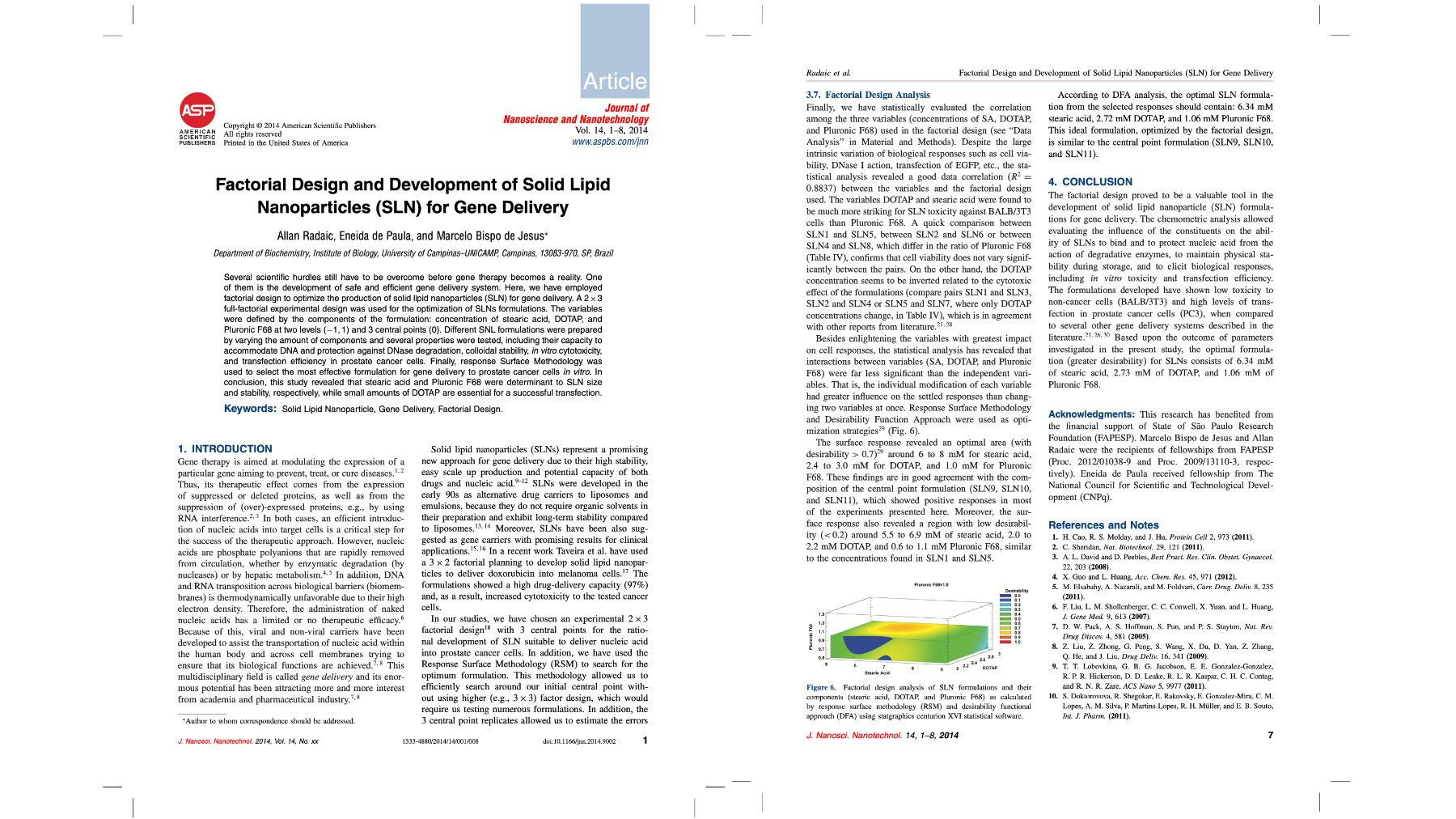
Several obstacles still need to be overcome before gene therapy becomes a reality. One is the development of a safe and efficient system for the delivery of genes. Here, we employ a factorial design to optimize the production of solid lipid nanoparticles for gene delivery. This study revealed that stearic acid and Pluronic F68 were determinants for the size and stability of SLN, while small amounts of DOTAP are essential for successful gene delivery in cells.
Journal of Nanoscience and Nanotechnology, 2015
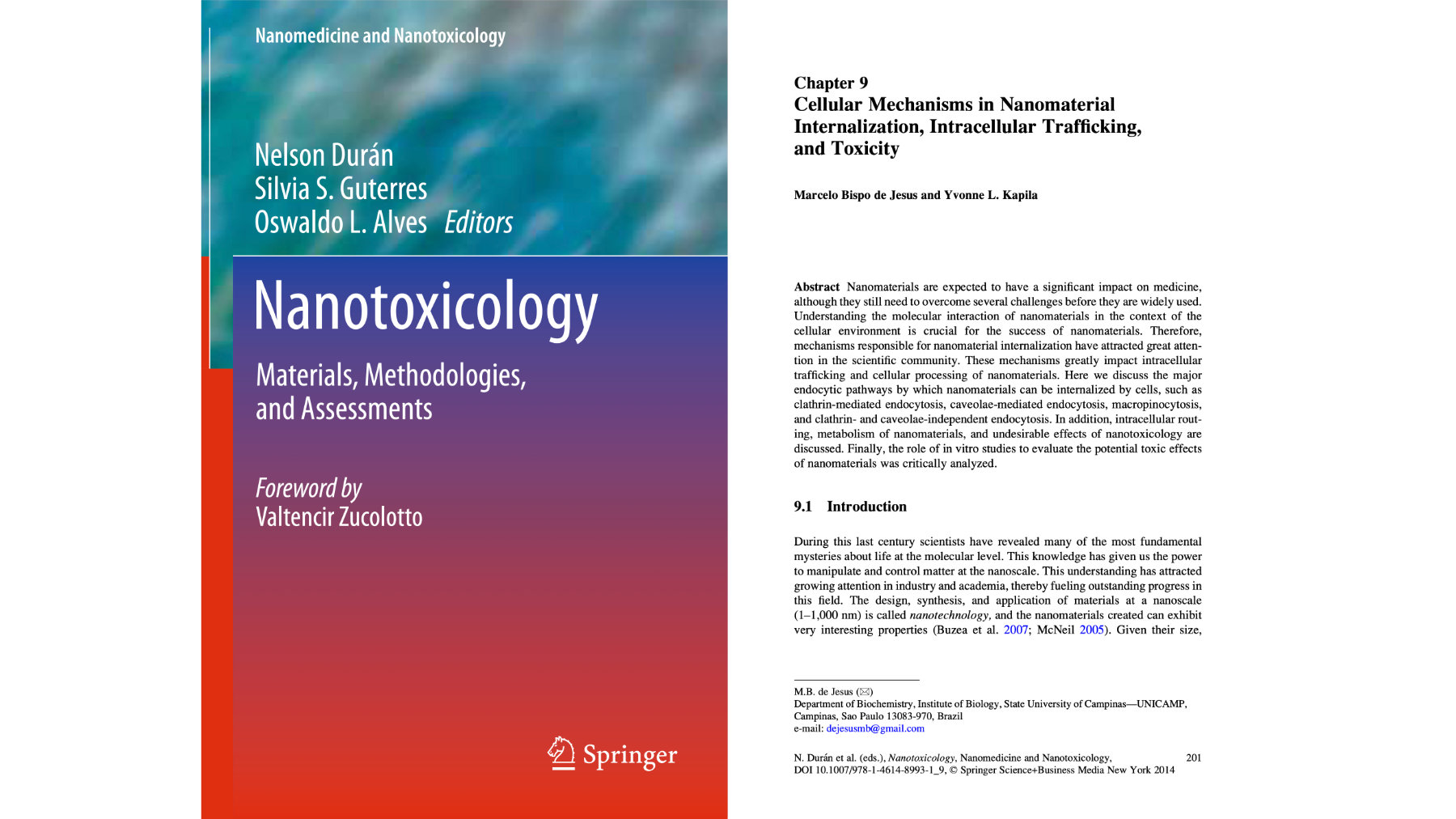
Understanding the interaction of nanomaterials and the cellular environment is crucial to nanomaterials' success. Therefore, the internalization mechanisms of nanomaterials have attracted significant attention from the scientific community. Here, we discuss the main endocytic pathways by which nanomaterials can be internalized by cells, such as clathrin-mediated endocytosis, caveolae-mediated endocytosis, macropinocytosis, and clathrin and caveolae-independent endocytosis. Also, intracellular traffic, the metabolism of nanomaterials, and the undesirable effects of nanotoxicology are discussed.
Part of the Nanomedicine and Nanotoxicology book series (NANOMED), 2014